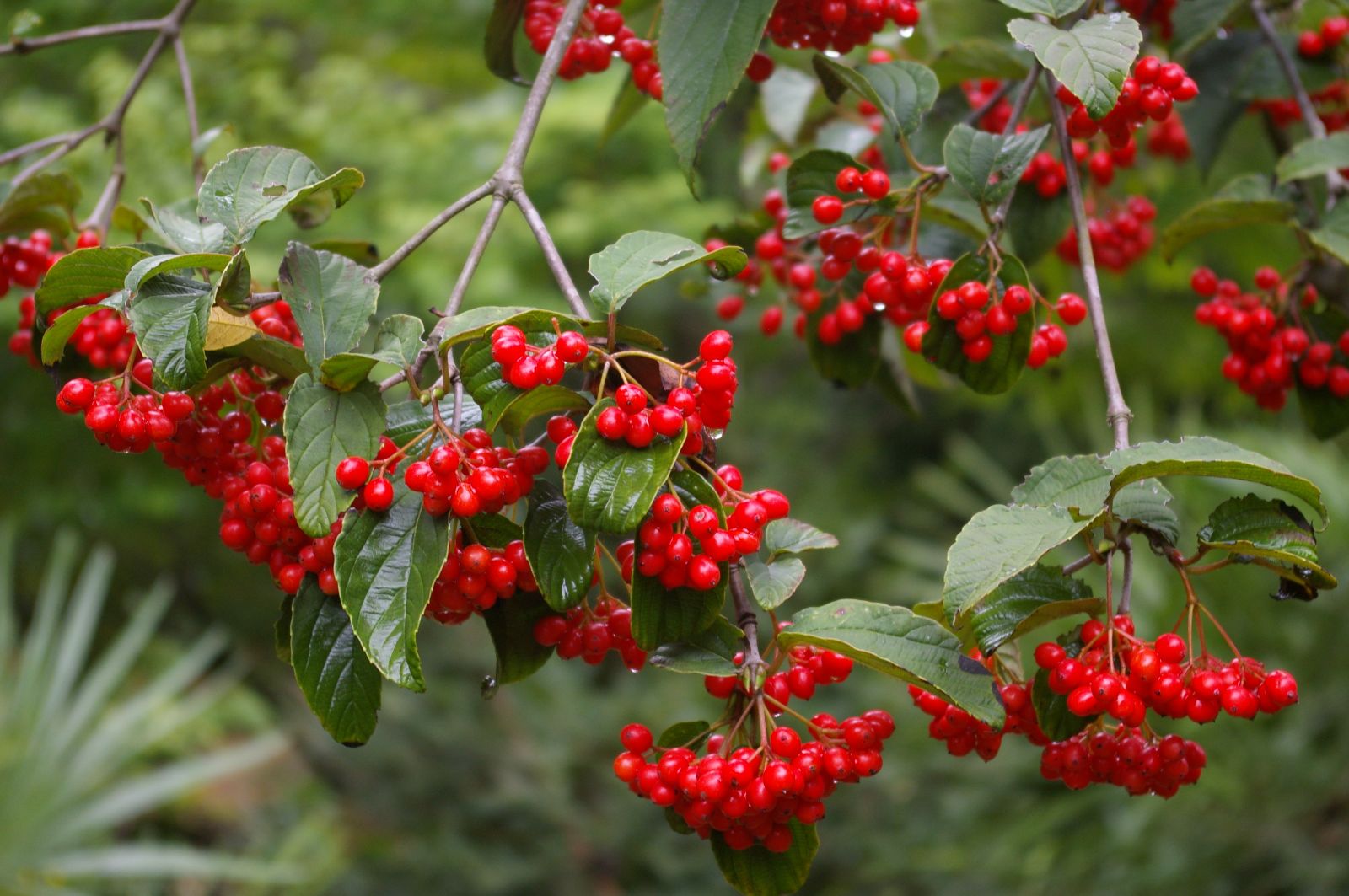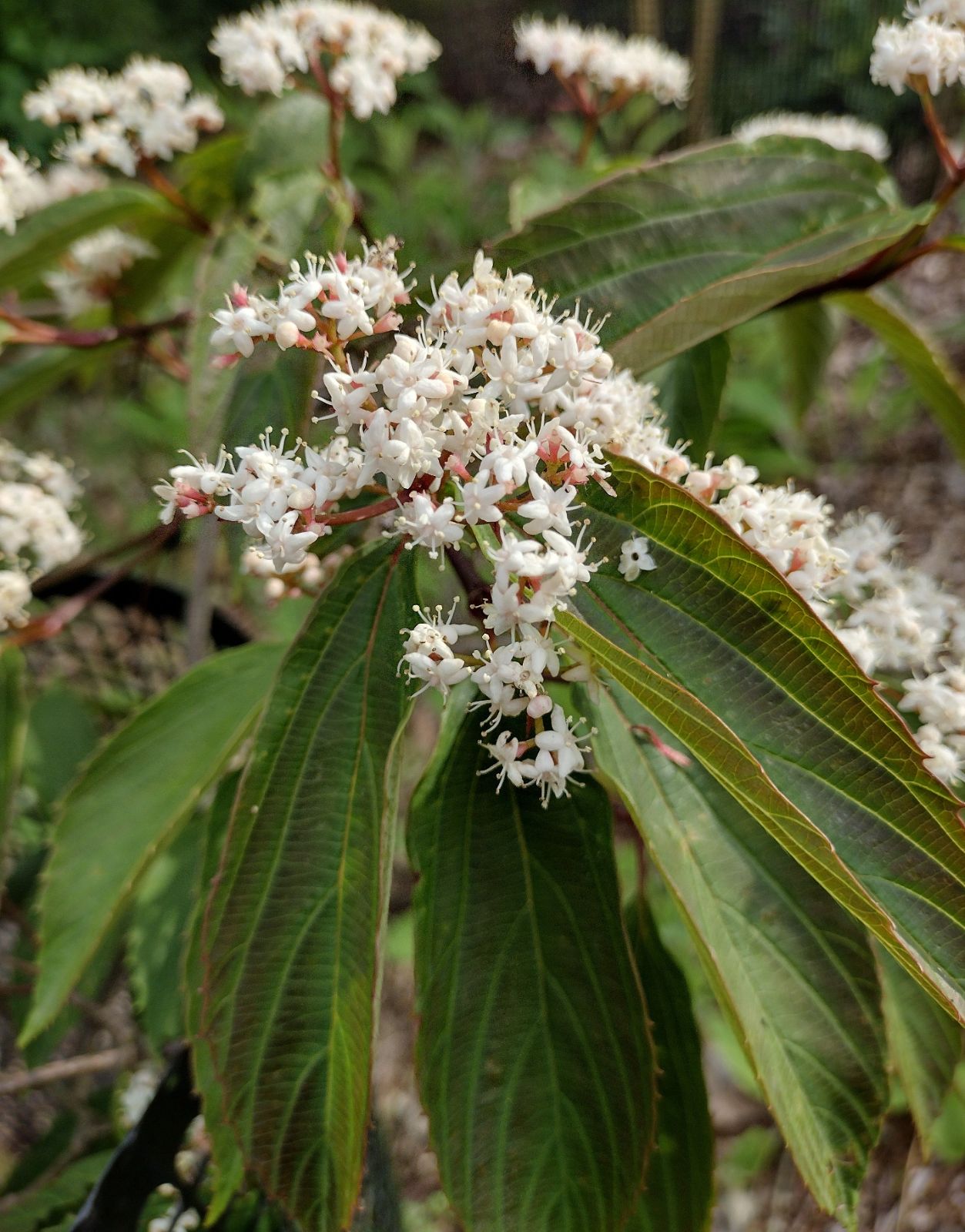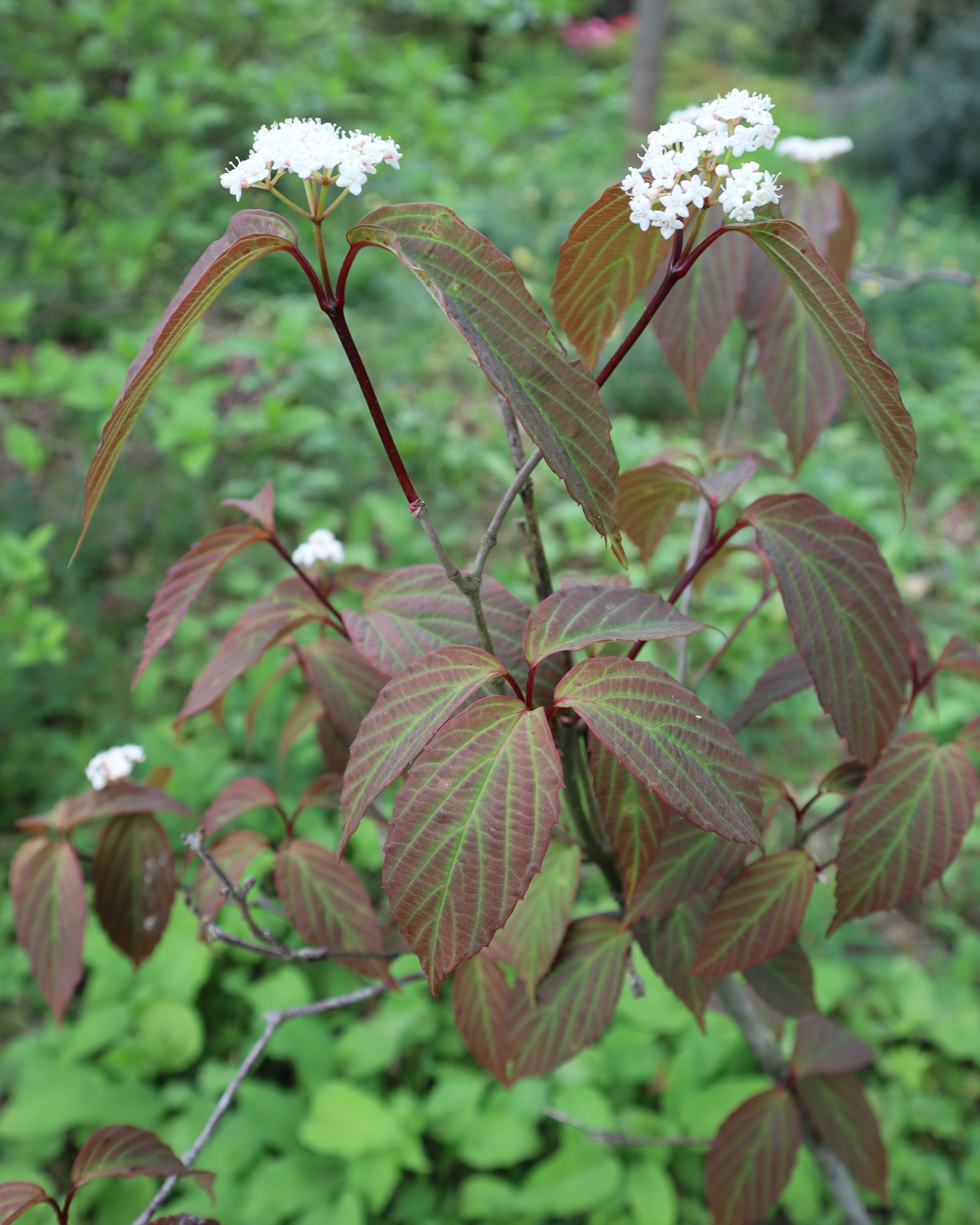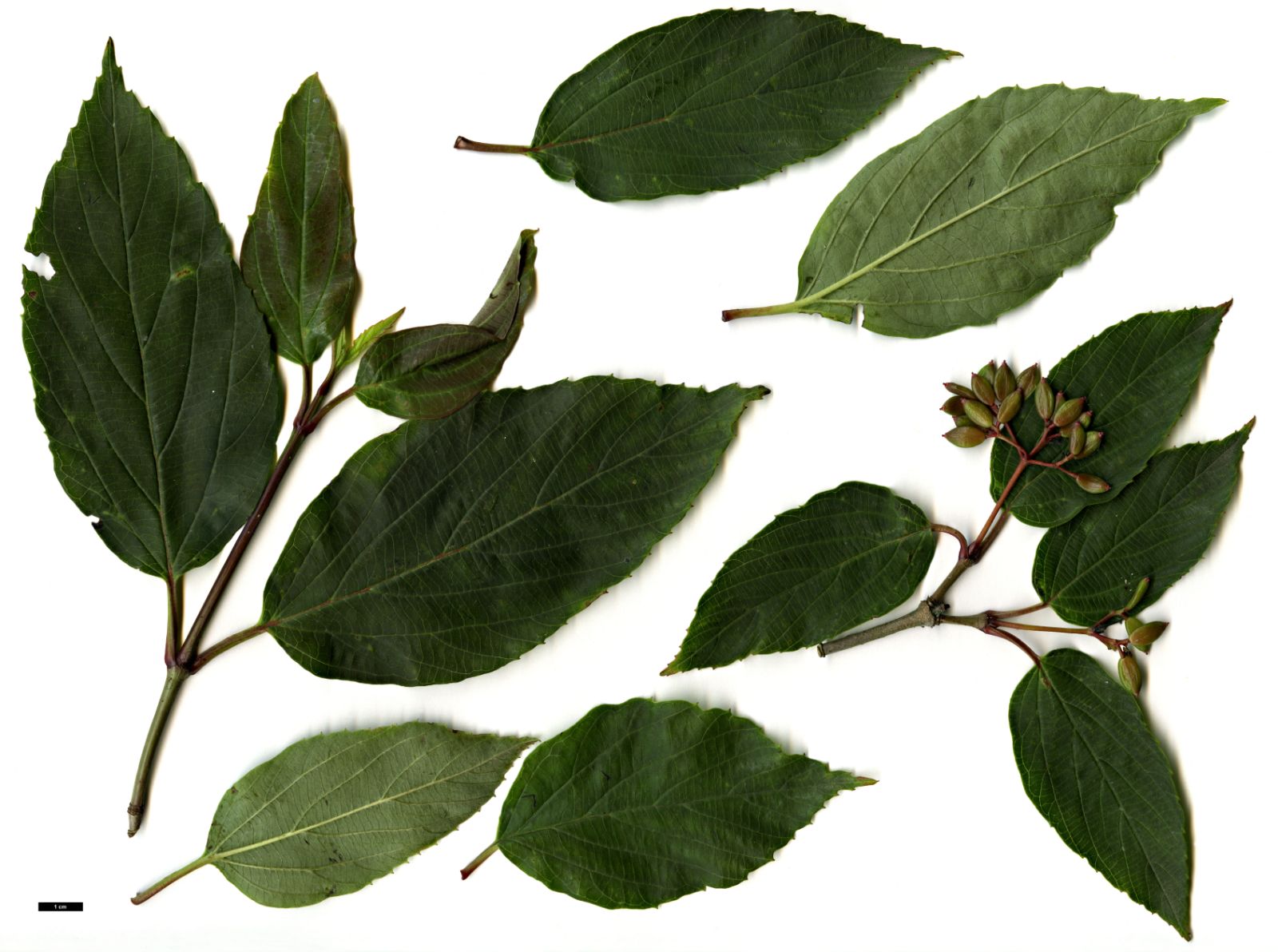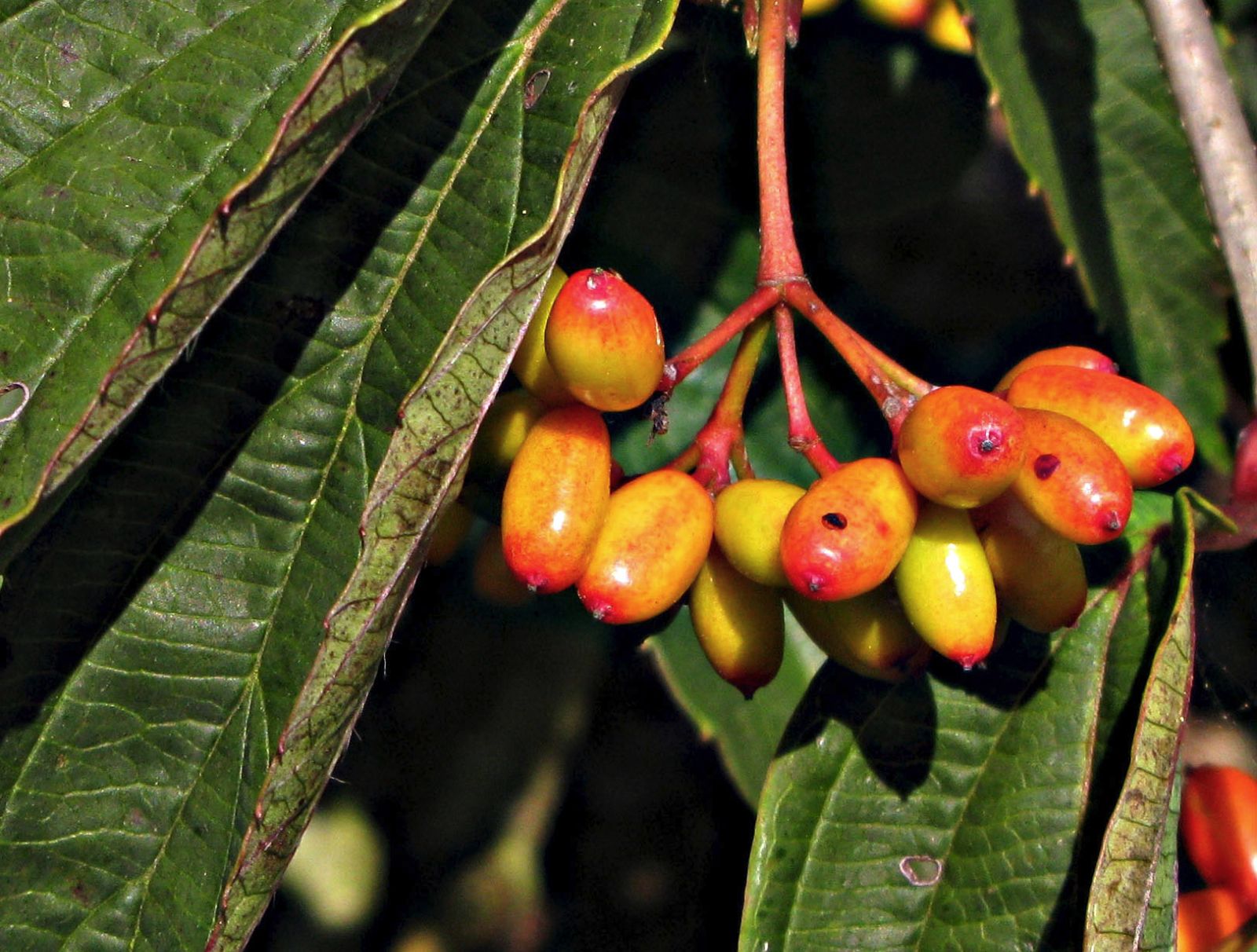Viburnum setigerum
Credits
Article from Bean's Trees and Shrubs Hardy in the British Isles
Recommended citation
'Viburnum setigerum' from the website Trees and Shrubs Online (treesandshrubsonline.
Genus
Synonyms
- V. theiferum Rehd.
Infraspecifics
Other taxa in genus
- Viburnum acerifolium
- Viburnum betulifolium
- Viburnum × bodnantense
- Viburnum buddleifolium
- Viburnum burejaeticum
- Viburnum × burkwoodii
- Viburnum × carlcephalum
- Viburnum carlesii
- Viburnum cassinoides
- Viburnum cotinifolium
- Viburnum cylindricum
- Viburnum davidii
- Viburnum dentatum
- Viburnum dilatatum
- Viburnum erosum
- Viburnum farreri
- Viburnum foetidum
- Viburnum grandiflorum
- Viburnum harryanum
- Viburnum henryi
- Viburnum hupehense
- Viburnum japonicum
- Viburnum kansuense
- Viburnum lantana
- Viburnum lantanoides
- Viburnum lentago
- Viburnum macrocephalum
- Viburnum molle
- Viburnum nudum
- Viburnum odoratissimum
- Viburnum opulus
- Viburnum phlebotrichum
- Viburnum plicatum
- Viburnum propinquum
- Viburnum prunifolium
- Viburnum rhytidophyllum
- Viburnum rigidum
- Viburnum rufidulum
- Viburnum schensianum
- Viburnum sieboldii
- Viburnum suspensum
- Viburnum tinus
- Viburnum utile
- Viburnum veitchii
- Viburnum wilsonii
- Viburnum wrightii
A deciduous shrub of erect habit, up to 12 ft high, with glabrous grey stems. Leaves ovate-lanceolate, rounded at the base, long, and taper-pointed, widely and sharply toothed, 3 to 6 in. long, 11⁄4 to 21⁄2 in. wide, dark green above, and glabrous on both surfaces, with the exception of long hairs on the midrib and on the parallel veins beneath, which mostly fall away by autumn; veins in six to nine pairs, running out to the teeth; stalk 1⁄2 to 1 in. long, hairy like the midrib. Cymes 11⁄2 to 2 in. across, five-branched, terminal on short, lateral, two-leaved twigs. Flowers white, 1⁄4 in. wide, all perfect. Stamens included. Fruits red, egg-shaped, nearly 1⁄2 in. long.
Native of Central and W. China; introduced in 1901 by Wilson. It is allied to V. phlebotrichum, but has larger, longer stalked leaves. Rehder’s specific name refers to the use of the leaves by the monks of Mount Omei as a kind of tea.

